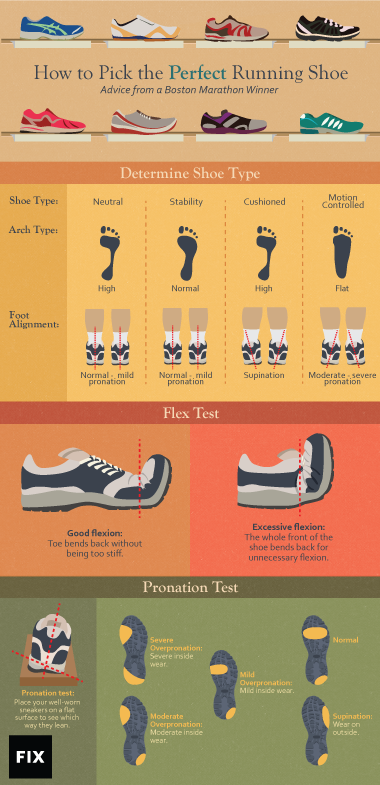How to Choose the Perfect Running Shoe
Advice from a Boston Marathon Winner
Over the past several decades, running has grown into a sport enjoyed by tens of millions worldwide. Women in particular have started running in unprecedented numbers, and now make up roughly 50 percent of the total running population.
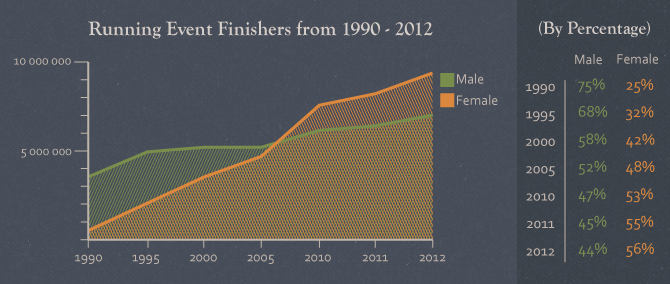
Many runners note that they especially appreciate the no-hassles accessibility of running. You don’t need expensive equipment, and you don’t have to join a country club or golf club, or drive hundreds of miles into the mountains.
Most runners simply open the front door, and head for their favorite local roads or parks. They need nothing more than a good pair of running shoes.
Ah, but there’s the rub (and sometimes the blister). To run your best and avoid injury, you need to find the running shoes that will work the best for you. That’s never been easy, and it has become even more difficult in recent years, as more shoe companies have noted running’s growth, and have pushed ever-more models into the market.
A typical retail store will display dozens of different running shoes on its shoe wall, and the
advertisements for each will make countless claims. You can buy shoes with cushioning, flexibility, motion control,
stability, energy return, low weight, a zero drop outsole, natural running properties, and more.
Who wouldn‘t be confused with all these choices?
And another has been added in recent years, with the mass popularity of Chris McDougall‘s Born To Run book about Mexico‘s Tarahumara Indians.
They often run days on end barefoot or in huarache sandals fashioned from car treads.
The book advocated for barefoot running, or at least “minimalist” running--that is, running in shoes with paper thin soles.
Many runners, wowed by the book, took up the barefoot-minimalist cause.
A word to the wise: The pendulum has swung swiftly away from these practices in the last year. Barefootin‘ can be a healthy practice in small doses on smooth,
grassy fields, but it doesn‘t work for many on the roads, and it requires a long, gradual break-in period.
For most runners, it‘s smarter to stick with conventional running shoes, and concentrate on learning good running form.
Here‘s how to wade through the confusion, and find the best running shoes for your individual needs.
Shop at a Specialty Running Store
Running experts agree that a running speciality store is the place where you will get the best service, and find the best shoes.
This is a store staffed by veteran local runners. They‘ve seen it all - both the whole range of shoes, and the varied needs of many different customers.
You wouldn‘t let a lawyer do brain surgery on you, and you shouldn‘t let anyone but an experienced runner help you select a pair of running shoes.
The specialty store staff can explain the four most common kinds of shoes to you - neutral, stability, cushioned, and motion-control - and analyze your stride,
training, and preferred running environment to make sure you get the perfect match of the right shoe for your style.
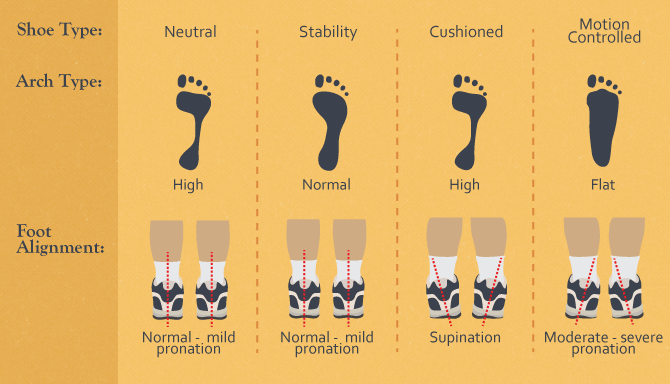
Try an Online Shoe-Selection Calculator
Yes, this is the opposite of the above, but it‘s fun and instructive, particularly if you don‘t have a running speciality store nearby.
The calculator is nothing more than a long string of computer code, but at least it‘s code that has been informed by running-shoe experts.
It will ask you the same half-dozen questions that a veteran retailer would ask you, and then generate a list of appropriate shoes.
The two best calculators are the Runner‘s World Shoe Finder and the
Road Runner Sports Shoe Dog.
Warning: Don‘t expect the two calculators to pick the same shoes for you. Things just aren‘t that cut-and-dried when it comes to shoe selection.
Let Your Feet be Your Guide
When you have no choice but to shop at a store that lacks veteran runners as staff, here‘s what you need to know to get the job done on your own.
Shop in the late afternoon or early evening
Your feet swell during the day, and also during a run, so this is the best time to assess the fit and function of running shoes
Don‘t buy tight-fitting shoes, not even in the late afternoon
You might think that a snug fit will help,
but it‘s more likely to produce blisters and other problems.
Instead, opt for shoes that are about ¼ to ½ inch longer than your longest toe (which could be either your big toe or your second toe).
These shoes will accommodate your feet comfortably, and perform the way you want them to
Give each pair of shoes the flex test
Bend back on the front of the shoe, pulling the toes toward the laces.
The shoe should flex quite easily, without a lot of force from you.
This flex approximates the way the shoe will bend when you toe-off at the end of each stride
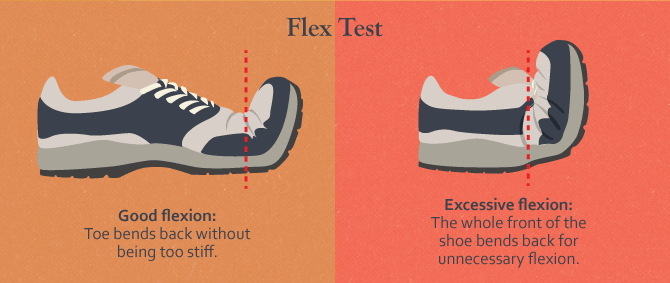
Consider motion-control shoes
If you are heavy, have a flat foot (with almost no arch), and if you are an overpronator.
Here‘s how to tell if you overpronate: Place a pair of your current shoes on the kitchen table (with newspaper under them).
Place the heels on the edge of the table, facing outward. Now bend over to the table‘s height,
and inspect your shoes closely. If the heel is straight, or inclined slightly inward or outward, you‘re not an overpronator.
However, if the heel tilts severely inward toward the arch, you may be an overpronator.
You should try on several pairs of motion-control shoes, as well as several pairs of stability shoes.
If your shoes don‘t tilt much and you have very high arches
You probably have an inflexible foot (so you don‘t overpronate)
Runners with high arches often find that they perform best in cushioned running shoes. Be sure to try on several cushioned shoes, as well as others.
Most runners fall into the middle of the bell curve
Between severe overpronators, and those with high arched, inflexible feet. If you‘re in this group, you don‘t have to worry about motion-control or extra cushioning.
You can select from the many stability shoes (sometimes called neutral shoes) on the market.
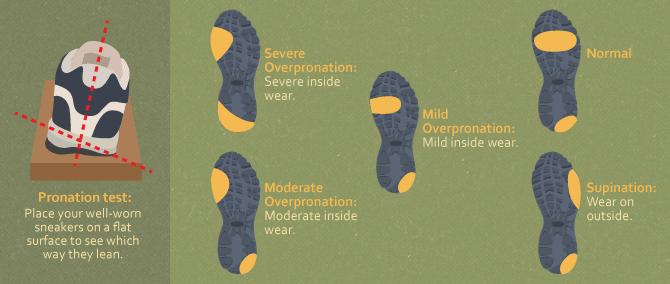
Here‘s the last rule – the most important of all
In the final analysis, you should buy the shoes that feel the best on your feet when you jog around the store or up a nearby sidewalk.
This may seem too-simple-to-be-true, given all the gewgaws and high technology of running shoes, but the experts all agree that comfort is king.
The best shoes will feel like an extension of your feet when you land, then transition your weight forward in mid-stride, and finally push off into your next stride.
Runners call this meshing of shoe with their running form “a smooth ride,” and it‘s the highest praise that can be conferred on a shoe.
A shoe with a smooth ride should last you for 500 miles or six months, whichever comes first.
After that, the midsole and outsole begin to deteriorate.
This changes the way your foot meets the road, and can lead to injury.
Better to be safe than sorry: It‘s time to buy your next new pair.
Embed the article on your site
